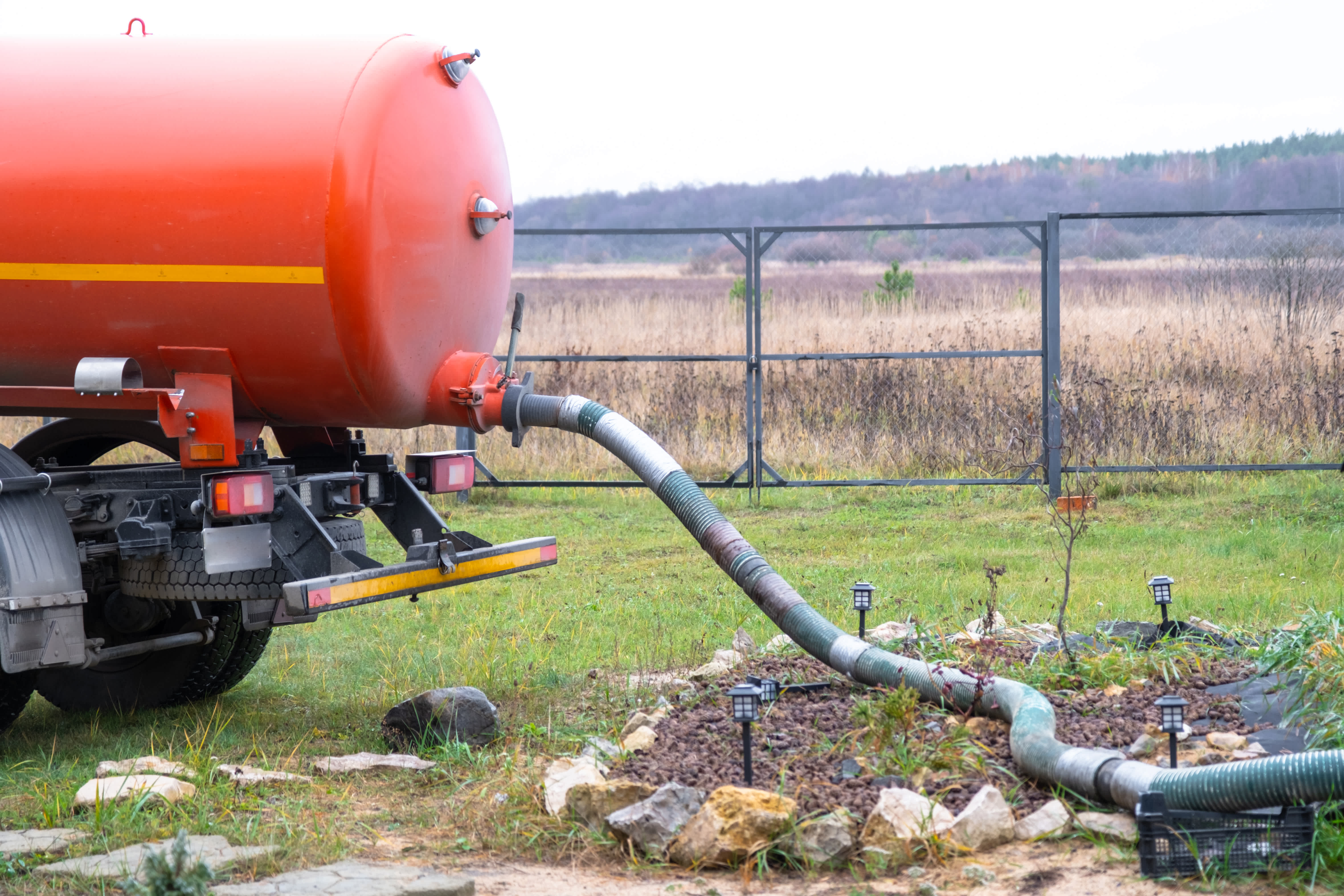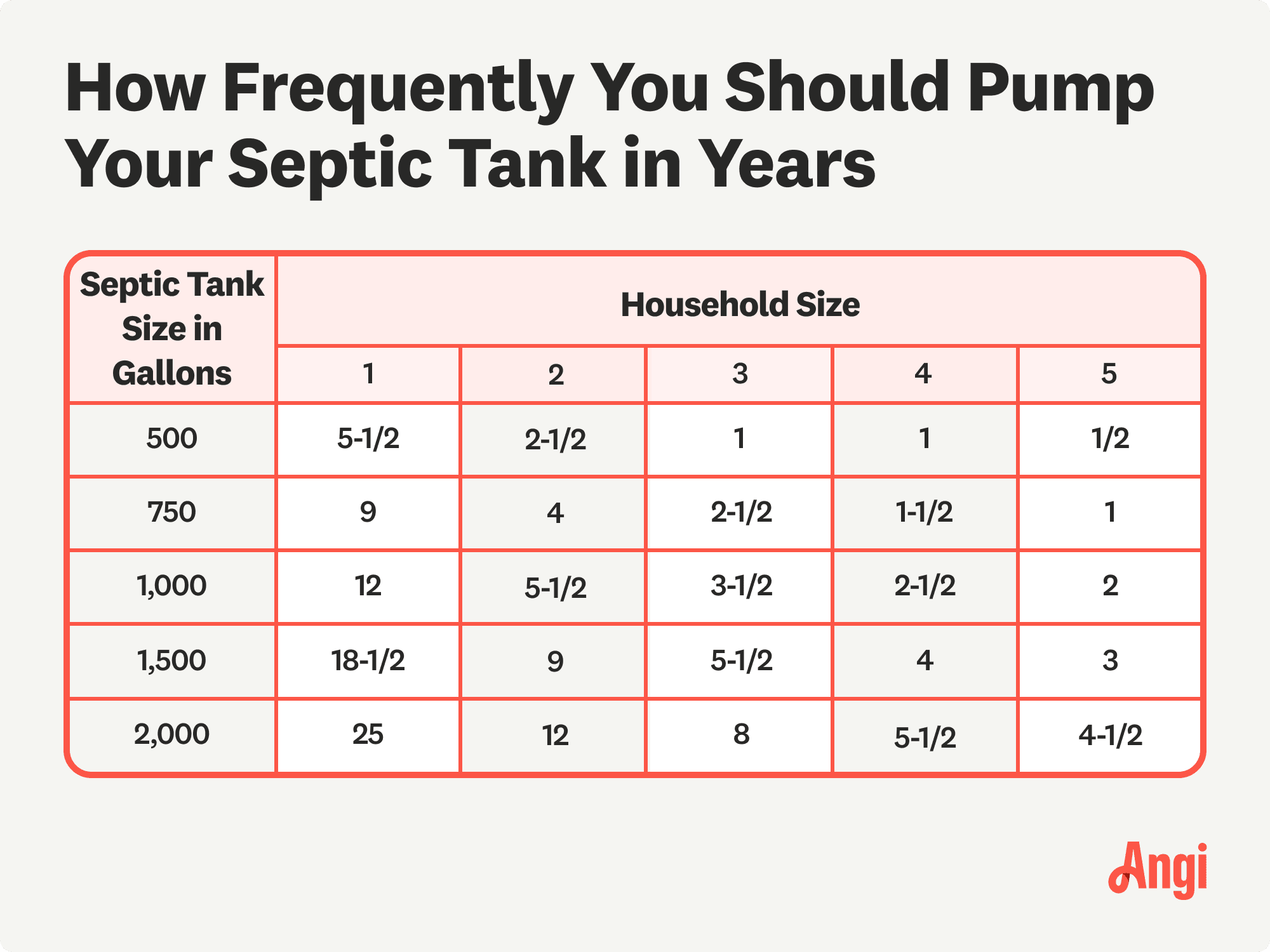
The average cost to connect to a public sewer line in Columbus, OH, depends on the linear footage, piping material, local regulations, and more.
Could septic trouble be brewing?


If you have a septic backup, you might notice foul odors, slow drains, and strange sounds coming from your plumbing.
Outside, you may see greener-than-normal grass or wet patches near your septic tank.
If you suspect a septic backup, call a septic repair pro to safely take care of the problem.
You’re brushing your teeth and minding your business when the sink stops draining and you hear an alarming gurgle coming from the pipes. These could be signs of a septic backup. Standing water, bad smells, and sewage backups are other telltale signs.
If you suspect a septic backup, it’s important to act quickly to avoid contaminating your home or environment with pathogens and pollution. The best course of action is to contact a septic pro so they can resolve the problem quickly and safely.
A septic backup can be dangerous to your health, your pets’ health, and the health and safety of other people or animals who come to your property. It can also pollute the landscape, damage your home, and weaken your foundation if not addressed right away.
When your septic system is clogged and backing up, bacteria and smelly gases can spread. Any liquid that escapes your plumbing system can cause water damage, leading to mold. Your landscaping could also be at risk since a septic backup can kill plants and poison the environment. If you think you have a septic backup, contact a septic pro right away.

There are some signals that will let you know you may have a septic tank backup.
A clear sign your septic tank is full is when raw sewage begins backing up in your toilets, sinks, showers, and floor drains instead of flowing freely away.
Does your toilet require multiple flushes, or do you notice standing water in sinks or showers? Water that drains slowly could indicate that the septic system is backed up and not working properly.
Weird sounds near the plumbing when the water is running can be caused by a septic tank problem.
Another indicator you’ve got a septic backup is when you start to notice smelly sewage odors near sinks, showers, and other drain pipes.
Don’t forget to look outside, too. Pay close attention to the ground near your septic tank, as well as the drain field nearby. Is there a patch of luxurious green grass that looks different from the rest of your lawn? Is there standing water forming wet spots or mushy places? These are all signs that water is escaping your septic system, which could be because of a backup.

Any time you notice sewage backing up in your toilets, sinks, or showers, it’s time to call a professional septic tank repair company near you. While you may be able to DIY one clogged drain on your own, you should tap a pro for help when there are multiple issues going on.
Septic tank pros have the protective gear and equipment necessary for handling contaminated water and dealing with the health and environmental risks. They can pump your tank for you and get your system operating again quickly. Septic tank pros also know how to work with different types of septic tanks. That’s important because they’ll understand the needs of your particular septic system and how it works.
You shouldn’t attempt to resolve a septic backup on your own. You’ll need a pro to pump the tank safely and effectively.
However, there are a few things you can do while you wait for professional help to arrive. First, reduce your water usage to avoid additional leaks or stress on the tank. If there’s a minor clog, you can clear it. You can also inspect your drain field, plumbing fixtures, and drains to see where the problem spots may be.
Call a pro with any questions you have about your system, even if they're general questions. The more informed you are about your system, the better it will work and the better that pros can help you with it.

Avoid the mess and trouble of a septic backup in the future by taking a few extra precautions.
Regular pumping and maintenance: Have you pumped your septic tank recently? Good septic tank maintenance requires pumping every three to five years.
Choose water-efficient fixtures: Using low-flow toilets or water-saving appliances can help you use less water and avoid overloading the system.
Spread out your water usage: Don’t run a shower, start the dishwasher, and do a load of laundry all at the same time. Spread out your usage so your septic tank has time to process the water.
Keep shrubs and trees from water lines: Tree roots are often a cause of septic tank problems, including backups. Plant or move your landscape trees and shrubs away from your septic tank and lines.
On average, the cost to repair a septic tank is $1,830, but that depends on what’s wrong, what type of septic system you have, and where you’re located.
Plastic septic tank: $500 to $2,000 to replace (repairs start at $150)
Fiberglass septic tank: $1,200 to $7,500 to replace (repairs start at $750)
Concrete septic tank: $5,000 to replace (repairs start at $700)
Bigger tanks will cost more to fix than smaller tanks, and you should plan on labor costs between $125 and $250 per hour. Don’t forget permits, too. You’ll need a building permit, which can run $460 to $2,770, for bigger septic repairs.
Get quotes from multiple septic tank repair pros to find the best combination of price and service for your situation.
From average costs to expert advice, get all the answers you need to get your job done.

The average cost to connect to a public sewer line in Columbus, OH, depends on the linear footage, piping material, local regulations, and more.

Need to know what sewer line replacement costs? This guide will help you prepare to budget for sewer line replacement done by local contractors.

A small septic tank system is ideal for spaces with minimal needs, such as a one-to-two-bedroom apartment or guest house. A small septic tank contains 750 or 1,000 gallons. We’ll cover everything that factors into your small septic system cost here.

In rural areas, the type of septic system you choose makes a difference. Learn more about a septic dry well versus a leach field to see which one is right for you.

A perc test for septic analyzes the absorption rate of the soil where a tank is going to be installed. Learn more about the test, cost, and passing grades.

A saturated leach field can lead to costly damage to your plumbing and yard. Learn how to fix a saturated leach field with this guide.